Preservation bias
The period furniture you see today is but a slim slice of woodworking's history—the wealthy slice.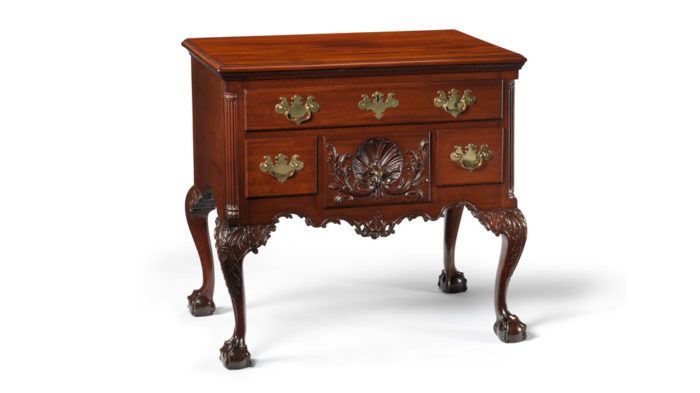
In any discussion about period furniture there is a historic concept that is critically important but often goes overlooked. That is the historic concept of preservation bias.
In its simplest terms, the idea of preservation bias is that not everything survives at the same rate into the historic record. This can mean that certain types of objects are over- or underrepresented by their surviving examples. A positive preservation bias means that a higher percentage of an object has survived into the historic record; a negative preservation bias means that a lower percentage of an object has survived. This can be caused by a variety of factors ranging from social pressures to environmental factors, as well as the utility or usefulness of the object to begin with.
Most decorative arts, such as furniture, are subject to a heavy preservation bias. This is usually skewed toward the furniture and objects that were designed and built for the ultra wealthy and typically represent the highest level of quality craftsmanship and design from the period in which they were made. So there is a strong positive preservation bias for high-end furniture and a strong negative preservation bias against working class and utilitarian furniture.
This bias toward the extreme high end of furniture making results from two factors. The first is a very practical force, and that is simply the fact that prior to the industrial revolution of the late 19th century, material was expensive, really expensive. Most historians agree that between 90% and 98% of the value of an object in the 18th century was the material that went into its construction.
This means that at the end of the useful life of a piece of furniture, the majority of people would reuse the wood. Once that piece is taken apart to be reprocessed into something else, it is lost from the historic record. This skews the preservation bias. This effect is multiplied by another factor—firewood. In a world that heats and powers itself exclusively with wood, furniture that could no longer be reprocessed into other useful objects would have what little value it had left salvaged in the form of the heat it could create for the working-class people who had owned it.
 Now this leads to the second reason furniture is subject to such a strong preservation bias, style and purpose. Consider a mahogany Philadelphia highboy, for example. It’s a superb example of American furniture, of course, but what, really, is its purpose? It’s certainly not just a place to put linens and clothes. The purpose of ostentatious furniture like this is to project status and wealth. When the purpose of furniture is to display wealth, the risk of it being reprocessed into something else goes way down, lending a strong positive preservation bias. Furniture as a status symbol is nearly always preserved at a higher rate than furniture simply for utility.
Now this leads to the second reason furniture is subject to such a strong preservation bias, style and purpose. Consider a mahogany Philadelphia highboy, for example. It’s a superb example of American furniture, of course, but what, really, is its purpose? It’s certainly not just a place to put linens and clothes. The purpose of ostentatious furniture like this is to project status and wealth. When the purpose of furniture is to display wealth, the risk of it being reprocessed into something else goes way down, lending a strong positive preservation bias. Furniture as a status symbol is nearly always preserved at a higher rate than furniture simply for utility.
I have always found preservation bias to be a fascinating and important idea. Take a moment to consider it when you next consider period furniture, and realize that what you are seeing is but a small representation of what once was.
 |
|
 |
|
 |
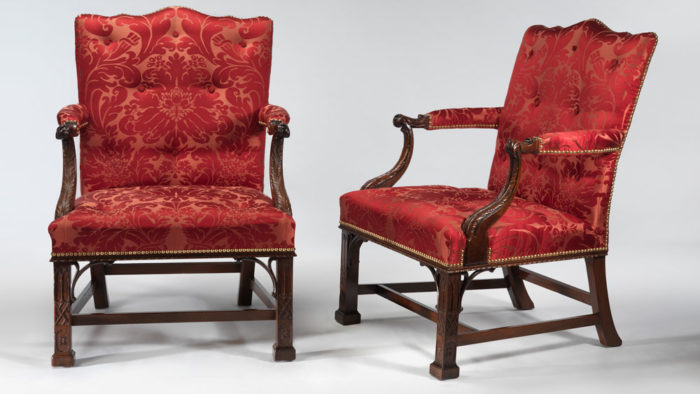



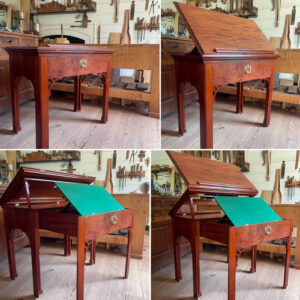
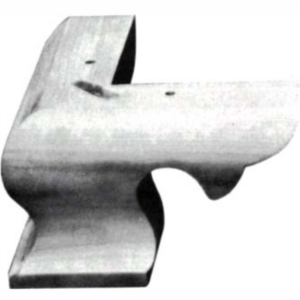
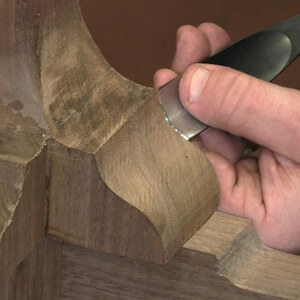












Comments
This article makes little sense to me. Books and articles about Shaker and American Colonial furniture must outnumber books about high style furniture by a margin of ten to one. And beyond books, there are numerous museums devoted to simpler American furniture forms. If there is "preservation bias," the article's author hasn't made a case for it.
In a FWW survey, I expressed hope this media source would sidestep social justice issues and remain focused on the craft. By titling economic class issues, the author's own ideological bias made the article unreadable for me.
I note two previous comments and will take an opposite perspective. I found this an excellent and well-written article. It would only have been improved by being a little longer.
Preservation bias is definitely a real thing - old peasant furniture is not generally preserved.
From the dawn of history, most of what we see of furniture is grave goods as it is only in graves that such are preserved. Those who tend to have grave goods also tend to be wealthy.
Later on again, as the author correctly points out, the majority of the furnishings preserved have been the possessions of the wealthy.
There are indeed more recent items from less wealthy people, but the majority of these have been preserved due to the specific circumstances that led to their preservation, being quite different from the norm - shakers are a good example as are Amish in the USA and Maori artefacts in New Zealand. - the specific cultures which created these were both humble and have extended their reach into fairly recent times. The UK has very little preservation of lower class furniture. The developing monoculture has not kept these modest traditional items.
One can see the same with housing. Land is valuable so only the finest examples of properties are preserved. It is uncommon to see preservation of peasant dwellings as most of them were demolished before we had the luxury of sufficient resources to preserve them.
I like the social aspects of woodwork and it's impact - often the style is very much a feature of it's time. As @Elmaduro says, I agree that there is no place for campaigning here, but this article is not campaigning - simply stating a valid and reasonable perspective on the history of woodwork. More please...
Well, Rob ....
It's no surprise to find an immediate "It's just socialistism" response to any mention of social class effects on ..... well, anything ..... in an American forum. Those be-knighted folk have long been tutored that "there is no such thing as society" only striving individuals who are worthy or not (winners or losers) by dint of their own individual effort. ANyone can win if they just try harder. Ha ha.
Social class couldn't possibly be an explanation of anything, especially the patterns of history. No, history is one of heroes and villains, bad guys and good guys, winners and losers, not one of subjugation and exploitation of most culture-tribes by one dominant other.
There will never be any serious history in the mainstream of USA kulture. Self aggrandising myths are much preferred - history as told by Hollywood movies with John Wayne in 'em. :-) Proper historians are like proper journalists - an unwanted embarrassment to self-esteem!
********
Like you, I find this blog article provides another useful perspective for the consideration of the various traditions in US woodworking. As with much else, history is indeed written by the winners - the various aristocratic classes and their furnishing preferences in this case.
Yes, the USA had and still has it's aristocrats. They might not be the old-fashioned Lordling class but they employ exactly the same social and political means of dominance, propaganda and exploitation as did barons, dukes and kings.
One result is this high visibility of folderol & frippery furniture, often with the scuttle legs and a rather glaring lack of utility in favour of an awe-inspiring eye-poke accompanied by the cry, "Lookitme and be humbled".
Lataxe, probably a pink-livered snowflakey leftist who should be denied free speech immediately! (Actually a conservative but not that kind of "conservative"). :-)
Hear! Hear!
Folks, keep it about furniture, or keep it about the article and this historical representation of furniture.
Please note that the name of the magazine is Fine Woodworking not Historical Woodworking or All Woodworking. It presupposes that its readers enjoy and aspire to the highest level of craftsmanship.
-2471649
Fine Woodworking is about all woodworking. We have readers of all levels, with incredibly varied interests. Because of that, not everything we publish will be of interest to every reader, and that's ok.
Oh goody! I will send you pictures of the IKEA furniture I assembled for your back cover.
Well, Elmaduro decided he wished to criticise the article on socio-political grounds (as in he believes them irrelevant to the subject matter). But the subject matter of this blog article is precisely the socio-economic causes of some furniture styles becoming representative of the past whilst others are not, despite being present through the past in probably far greater numbers.
No subject - especially one as wide as furniture making and use - can be well understood without understanding also something of the historical socio-economic ecology in which things were commissioned, designed, made, bought, preserved and valued (or not) for more than their cash value.
For me, the article highlights the damaging tendency of "history written by the winners". It obliterates not only the artefacts of a much wider history but also the deeds and worth of those who produced and used those artefacts. Additional historical perspectives are not tolerated if they impinge upon the various national myths and supermen.
**************
Happily, some of that mostly-hidden history of the not-winners remains available, as do their artefacts and their designs. Green woodworking traditions preserve the designs and techniques of the more commonplace wooden artefacts of yesteryear, for example.
Even those more modern styles of furniture lost to the dominant culture (as found in WW mainstream magazines) can be found here and there. War time British Utility furniture, for example, can still be found in many 2nd hand furniture outlets in West Wales and, I suspect, other parts of Britain, although I can't ever recall a WW magazine article about it. People still like and buy it.
Fine Wood Working magazine does occasionally attempt to explore the wider dimensions of woodworking, as in this blog. Even the over-sensitive (to alternative socio-economic views besides their own) enjoy articles about reviving old Stanley planes or some other "patriotic" emblem of past WW stuff. Why the intolerance for other explorations of historical woodworking?
Well, very recent US history perhaps has one answer to that. Intolerance against, and sensitivity about, other views is a "thing" now.
Lataxe, just speaking freely, you know; as learnt from Americans. :-)
Might not one say that the better made pieces survived because they were better made?
All of my high school wood shop projects are still intact (except one). Cheap dados and screws will hold up for ages, but I doubt anyone wants to take pictures or document old, cheap, pine furniture.
I don’t know that better made holds as much sway as we want it to in this debate.
Not too long ago, a certain period woodworker quit his role at Colonial Williamsburg over how the quality of a reconstructed slave quarters would be historically misconstrued. While the wealthy could afford elaborate, “look at me” furnishings built by slave labor, it was believed by that woodworker that the slaves (being the craftsmen) would still have built themselves decent housing.
...And that’s how Roy Underhill left Virginia.
Ignoring our biases is dangerous, and the survival of furniture over time shows those biases taking physical form. I’d like to see FWW show more techniques and designs that we would have seen in the tenant’s house, not the landlord’s. The tenant was the able handed craftsman, after all.
This isn’t politics, this is empirical.
Agree
It's something of a glad relief that this blog seems to have been mostly greeted with understanding and even enthusiasm, judging by comments-so-far. And, btw, I'd like to apologise if I seemed to tar all Yanks with the same brush, in an above post, as rather closed-minded about the history of the WW socio-economic dimension. The more old-fashioned, traditionally open-society America still exists, it seems, under the boil of mad-news about swivel-eyed crazies with their many prejudices, coming of out of the place for the last few years.
**************
It would be no bad thing, I feel, for FWW to do a little more about the history of woodworking styles - although a trawl through the FWW archives does reveal quite a few such articles. Mind, a lot of them are about the museum pieces. But then again, there is (as Mr Macoute points out above) stuff about Shakers, items like ladder back and Adirondack chairs and one or two other articles about the less ostentatious stuff done up in periwig, flounce-shirt with scuttle-leg.
What other traditions besides the oft-seen Federal, Greene & Greene, Shaker and so forth exist in the USA? I suspect there are a number we foreigners have never seen and thus have little knowledge of.
In the last decade, FWW (or some of it's contributors) seemed to discover various British Arts & Crafts traditions and styles. Even to me - long interested in that area - the articles by Nancy Hiller were something of an eye-opener concerning less well-known stuff such as that of Lebus.
More of this would be fascinating - as history but also as an opportunity to practice a new WW style in what we readers might make.
Lataxe
I spent a lot of years in the antiques trade. I have been to thousands of auctions and estate sales. I researched in museums and attended exhibitions. it always seemed to me that I saw far more Pennsylvania Dutch blanket chests and battered farm tables than Philadelphia highboys. I think much fine furniture is better preserved but it is also kept in the hands of families who have also preserved their family heritage in the form of the artifacts that were a part of their success. We are a nation born of commercial endeavors. We sought separation from England to be free in so many ways including the right of free trade and the striving for business and social success that comes along with that. Wealthy people are less likely to break up their Sheraton sideboards to feed the fireplace. Still, the elite elements of a community are generally a minority. So for each common parlor table that went to ashes, there were fifty more that were kept because they belonged to grandma. So maybe the classes in this country are not so different inside their hearts where it matters. We as woodworkers and craftsmen of all kinds of handwork can appreciate the diverse nature of history better than most. Maybe it is equally valuable to preserve the styles of both the simple and the sophisticated. I have always reveled in the spiritual pragmatism of the shakers, the decorated utility of farmhouse furniture and 19th century parlor items, and the skill and design brilliance of Chippendale, Sheraton, and all the rest. The true wealth of the decorative arts is in its incredible variety that is a window into the human mind. Celebrate all we have and strive to reach out and exceed that grasp which can only be limited by our own lack of vision.
Log in or create an account to post a comment.
Sign up Log in